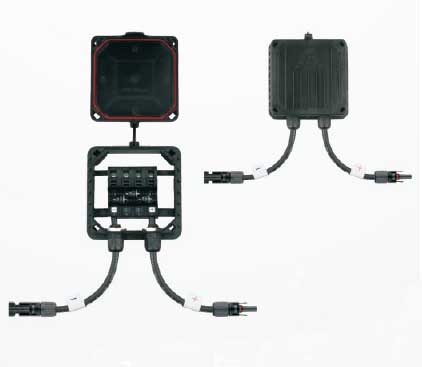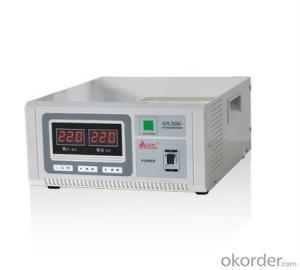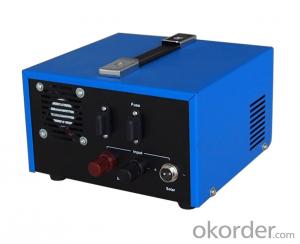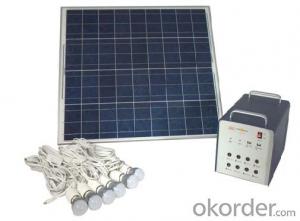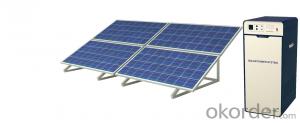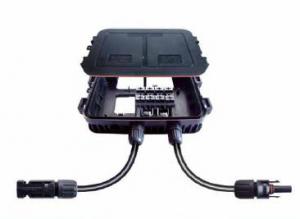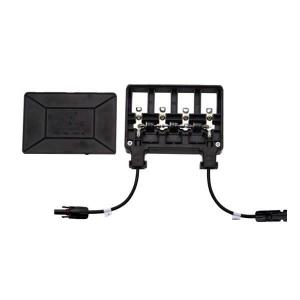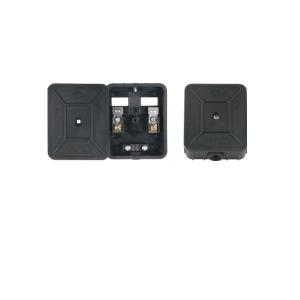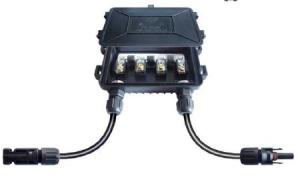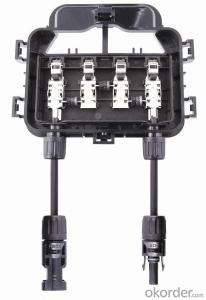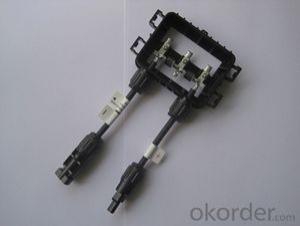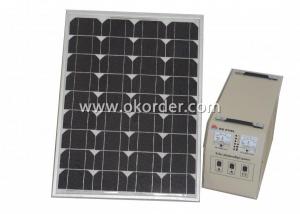Solar Junction box PV-JB001 ST01
- Loading Port:
- China Main Port
- Payment Terms:
- TT OR LC
- Min Order Qty:
- -
- Supply Capability:
- 10000 set/month
OKorder Service Pledge
OKorder Financial Service
You Might Also Like
Solar Junction box,Due to highly robustness,UV-resistance,the touch protection a high grade connection is guaranteed for many years.
Rated voltage 1000 V
Rated current 20A
Contact resistance ≤5mΩ
Dia of pin or socket 3mm /4mm
Protection degree(mated,junction box closed/unmated) IP65/IP2X
Operating temperature -40 C to +85C
Insulation material PPO
Contact material Copper,silver plated
The boxes are supplied with 2 terminals up to 6 terminals.
- Q: Are there any disadvantages to using solar energy systems?
- Yes, there are a few disadvantages to using solar energy systems. Firstly, the initial installation cost can be high, making it less accessible for some individuals or communities. Secondly, solar panels require a significant amount of space to generate optimal power, making them less suitable for small or densely populated areas. Additionally, solar energy production is dependent on weather conditions, meaning its output may be variable and less reliable compared to traditional power sources. Lastly, the production and disposal of solar panels can have environmental impacts, especially if not properly managed. However, despite these disadvantages, the long-term benefits of solar energy, such as reduced greenhouse gas emissions and lower energy costs, often outweigh these drawbacks.
- Q: What is the role of solar-powered water heaters in solar energy systems?
- Solar-powered water heaters play a crucial role in solar energy systems by utilizing the sun's energy to heat water for various purposes such as domestic use, heating, and even industrial processes. By harnessing solar power, these devices reduce the reliance on traditional energy sources, thus promoting sustainability and environmental conservation. Additionally, solar water heaters contribute to energy efficiency and cost savings by reducing the need for electricity or gas to heat water, making them an important component of solar energy systems.
- Q: How do solar energy systems handle excess energy production?
- Excess energy generated by solar energy systems can be managed in several ways. One way is through net metering, which involves feeding back any surplus energy produced by the solar system into the grid. This surplus energy is then credited to the homeowner's account, causing their meter to spin backward and ultimately reducing their energy bill. Another approach to handling excess energy production is the utilization of battery storage systems. These systems enable homeowners or businesses to store any extra energy generated by their solar panels. The stored energy can then be used during periods of high energy demand or when the sun is not shining, such as the evening or cloudy days. This maximizes the efficiency and value of the solar system. Additionally, certain solar energy systems are designed to automatically shut down or reduce their output when there is an excess of energy being produced. This strategy, known as curtailment, is commonly implemented in large-scale solar farms or utility-scale installations. By decreasing the output in these situations, the surplus energy is not wasted and can be managed and distributed more effectively. In summary, solar energy systems employ various methods, including net metering, battery storage, and curtailment, to effectively handle excess energy production. These mechanisms ensure that the surplus energy is not wasted and can be efficiently utilized, showcasing solar energy as a sustainable and highly efficient power source.
- Q: Are there any health risks associated with solar energy systems?
- There are minimal health risks associated with solar energy systems. The main concern is the potential for electrical shock or fire hazards during installation or maintenance. Additionally, the production of solar panels involves the use of potentially harmful chemicals, although strict regulations are in place to minimize exposure. Overall, when properly installed and maintained, solar energy systems are safe and pose no significant health risks.
- Q: Can solar energy systems be used in areas with limited access to cultural resources?
- Yes, solar energy systems can be used in areas with limited access to cultural resources. Solar energy systems are not dependent on cultural resources such as fossil fuels or traditional energy sources. They can be installed and utilized in any location with access to sunlight, making them a viable option for remote or culturally isolated areas.
- Q: Can solar energy systems be used in all regions?
- Solar energy systems can be used in all regions to some extent. However, the effectiveness and efficiency of solar energy systems may vary depending on factors such as the amount of sunlight available, local climate conditions, and the size and orientation of the solar panels. In regions with abundant sunshine, solar energy systems can provide a significant portion of the energy needs. In regions with less sunlight, solar energy systems can still be used but may require additional support from other energy sources.
- Q: How long do solar energy systems typically last?
- Solar energy systems typically last for about 25 to 30 years.
- Q: How much space is needed for a solar energy system installation?
- The space required for a solar energy system installation depends on various factors such as the system size, type of solar panels used, and the available sunlight. On average, a 1 kW solar panel system requires around 100 square feet of space. Therefore, for larger systems, more space will be needed. Additionally, the orientation and tilt of the panels can also impact the space requirements. It is recommended to consult with a solar energy professional who can assess your specific needs and provide accurate information regarding the space needed for a solar energy system installation.
- Q: Can solar energy systems be used in areas with frequent hurricanes?
- Yes, solar energy systems can be used in areas with frequent hurricanes. While it is true that hurricanes can cause damage to solar panels and other components of solar energy systems, there are measures that can be taken to mitigate these risks. Firstly, the design and installation of solar energy systems in hurricane-prone areas can be done to withstand high winds. This includes using stronger mounting systems, reinforced frames, and secure anchoring techniques. Additionally, the orientation and tilt angle of the panels can be optimized to minimize wind resistance. Furthermore, regular maintenance and inspections can help identify any potential issues or damage to the system before a hurricane hits. This allows for timely repairs or replacements, ensuring the system remains functional and safe during extreme weather events. In the event of a hurricane, it is important to have emergency procedures in place to secure the solar panels and other components. This can involve temporarily removing the panels and securing them indoors or utilizing protective covers to shield them from debris. Moreover, the use of microinverters or power optimizers in solar energy systems can enhance their resilience in hurricane-prone areas. These technologies allow each solar panel to operate independently, mitigating the impact of any damage to a single panel and preventing the entire system from shutting down. Lastly, solar energy systems can also contribute to the resilience of communities during and after hurricanes. With proper battery storage, solar systems can provide backup power during power outages, allowing essential services to continue operating and providing electricity for critical needs such as lighting, refrigeration, and medical equipment. Overall, while precautions need to be taken to ensure the durability and functionality of solar energy systems in hurricane-prone areas, they can be effectively used to harness clean and renewable energy even in the face of frequent hurricanes.
- Q: How does the cleanliness of solar panels affect their performance?
- The cleanliness of solar panels has a significant impact on their performance. When solar panels are dirty or covered in dust, dirt, or any other debris, it reduces their ability to absorb sunlight efficiently. This results in a decrease in the amount of electricity generated by the panels. Dirt and dust particles on solar panels create a layer that blocks sunlight from reaching the photovoltaic cells. This obstruction prevents the panels from converting sunlight into electricity effectively. As a result, the output of electricity decreases, and the overall performance of the solar panels is affected. Regular cleaning and maintenance of solar panels are essential to maintaining their optimal performance. By keeping the panels clean, you allow maximum sunlight to reach the cells, ensuring efficient energy conversion and higher electricity production. This is particularly important in areas with high levels of dust, pollen, or other airborne particles. Moreover, dirty solar panels can also lead to additional issues. Accumulated dirt can trap heat on the surface of the panels, causing them to overheat. This can potentially damage the panels and reduce their lifespan. Additionally, if the dirt or debris is not cleaned promptly, it can corrode the surface of the panels or create scratches, further affecting their performance and longevity. To maintain the cleanliness of solar panels, it is recommended to clean them regularly, especially in dusty or polluted environments. This can be done using a soft brush or sponge with water and mild detergent, ensuring not to scratch the surface. In some cases, automated cleaning systems or specialized solar panel cleaning services may be used for larger installations. In conclusion, the cleanliness of solar panels directly affects their performance. By keeping them free of dirt and debris, you can maximize their ability to absorb sunlight, leading to increased electricity production and improved efficiency. Regular cleaning and maintenance are crucial to ensure optimal performance and longevity of solar panels.
Send your message to us
Solar Junction box PV-JB001 ST01
- Loading Port:
- China Main Port
- Payment Terms:
- TT OR LC
- Min Order Qty:
- -
- Supply Capability:
- 10000 set/month
OKorder Service Pledge
OKorder Financial Service
Similar products
Hot products
Hot Searches
Related keywords

